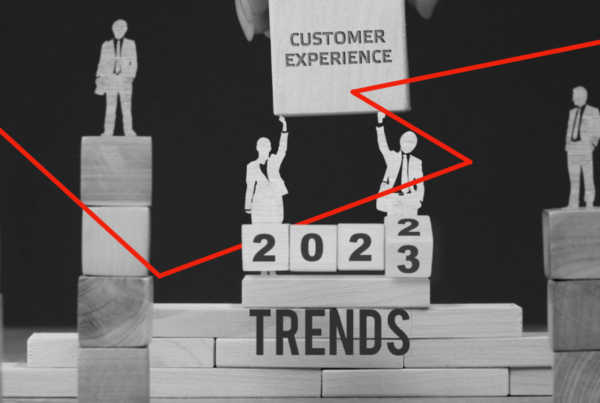We know launching a new product or feature of an existing product can be extremely challenging. One of the most critical things in ensuring a seamless end-user experience is sharing a common understanding of the key strategies involved in planning.
In particular, understanding valuable strategies like the go-to-market (GTM) strategy – what is it? How does it compare to a marketing and product strategy? Why an effective one is critical, especially in today’s digital world?
In this post, we help define the GTM strategy, including why reputable customer-experience (CX) analysts have determined Wonderflow as a valuable solution for product development and planning.
“A go-to-market strategy is a plan that details how an organization can engage with customers to convince them to buy their product or service and to gain a competitive advantage.”
– Gartner
Further, it includes tactics related to pricing, sales, and channels, the buying journey, new product or service launches, product rebranding, or product introduction to a new market.
In order to deliver something new to your target audience, your business needs to align the rest of the organization around the activities that need to be completed. That’s where the importance of a go-to-market (GTM) strategy comes into place.
Some key characteristics of a go-to-market plan includes:
- It being a comprehensive plan that focuses mainly on how to introduce new products or services to reach the end-users
- It specifically outlining how you will communicate technical functionality to customers in a way they can understand (i.e. user-friendly messages) and how you plan to launch a new experience or sequence of new experiences
- It containing a short-term focus and a product-focus
- It being implemented one time or a few times only (e.g. created once per year)
- Being made up of various elements, including product campaigns and targets, marketing campaigns and targets, positioning, pricing, customer personas, distribution channels
- Determined and planned way early on before expected new product or service launch
- Being most suitable for when you are in one or more of these conditions: new product launch, new product feature, and new business expansion into a foreign market
- Being created by product marketing managers with main involvements from Product, Marketing, Sales, and Support
- Being able to align and unify the entire organization around any required tasks needed to launch in a target market
Compared to a GTM strategy, marketing strategy is:
- More about helping businesses reach their target market over time and delivering on its overall value proposition
- More of a long-term focus
- More of an ongoing process involving different marketing efforts to keep customers engaged
Compared to a GTM strategy, a product strategy is:
- More about overseeing the entire product lifecycle and defining the product’s future while being able to adapt to changing as well as helping to unify the entire organization around a single shared vision of how a new product/feature will grant value and achieve business objectives
- demands and so also product-oriented like a GTM strategy
- More about identifying key investment areas and connects with your product roadmap or timeline
- Less short-term focus and more long-term focus and can be about a radically new product or service or improving existing features
- Determined earlier on it outlines the entire process and team-related tasks
- Created and presented by mainly product managers with support from other departments (technical support, sales) and reviewed by corporate seniors and is executed by the product team
- Made up of elements like consumer surveys, product campaigns, and targets, positioning, customer personas, industry research, industry analysis, competitor analysis
Needless to say, a GTM strategy, a product strategy, and a marketing strategy are among the top critical methods needed to offer customer value and they must all be well in balance with one another.
Why an Effective (and Tech-Savvy) Go-to-Market Strategy is Needed
“Companies that move quickly and decisively to transform their go-to-market channels, models, and culture, through technology should be able to unlock substantial value: top quartile B2B players generate 3.5% more revenue and are 15% more profitable than the rest of the B2B field.”
– McKinsey & Company
Although, indeed challenging, to create an entirely new GTM strategy at the start, the benefits are far more superior. Some of them are:
- Reduce time-to-market
- Increase adoption rates and conversions
- Reduce risks of errors
- An overall high success rate in the end
Take, for instance, the example of Southwest Airlines. As one of the major American airlines today, the company didn’t always have it good, particularly when they launched during the ’70s and battled adversity challenges to enter the commercial airline sector.
However, to compete against other bigger airlines, Southwest came up with a creative way to tackle many passengers’ pain points. That is, they introduced a “point-to-point system” in which passengers directly flew to their final destinations instead of having to stop midway at a central hub (“hub-and-spoke system”), which most other airlines had.
As a result, many passengers could stop purchasing connecting flights, thus saving on costs.
Why the Heck Us? CX-Create’s Analysis & Recommendation of Wonderflow as a Go-to-Market Solution

Despite hundreds of VoC technologies on the market to help companies empower their product development processes, thus decision-making, why have top-tier brands, such as Philips, Samsung, DHL, Colgate-Palmolive, Lavazza, and more, chosen Wonderflow’s customer feedback analytics system?
Well, readers can now find out. CX-Create founder, Jeremy Cox (more info below), had long been observing the impact of our AI-driven text analytics tool, which is helping businesses to understand what it is exactly that consumers want in products and experiences.
And in his mission to find startups that are effective in improving CX, Cox analyzed our solution. As a result, he addressed in an in-depth report why Wonderflow is essential for any consumer products company keen on differentiating and winning in its target markets.
Some of Cox’s key observations are:
- Most customer feedback management systems are cumbersome and require research expertise to master. This presents a significant barrier preventing effective voice of the customer (VoC) insights adoption across different company departments.
- Wonderflow’s heritage in AI, analytics, and UX provides the foundation for its success
- Wonderflow is an advanced unified consumer analytics platform providing actionable recommendations to improve or adapt products to appeal to consumers in different markets
- And more
Download and read the full report here.
About CX-Create
CX-Create is an independent IT Analyst and Advisory company that puts together insight on critical customer experience principles and relevant technologies. It has the unique mission to help enterprises, vendors, and tech startups stay relevant to their customers.
About Author Jeremy Cox
Cox himself is said to be “recognized by major CX vendors, clients, and former colleagues as a leading thinker in customer experience and engagement.” He has worked at profound companies like IBM, particularly in the 90s where he learned that to understand business means to be in the customer’s shoes.
Additionally, Cox worked in consultancy at KPMG Consulting and also has independently consulted public and private sectors. He has further been commissioned by Oracle to interview and report on startups supported by the highly successful, Oracle for Startups program.




